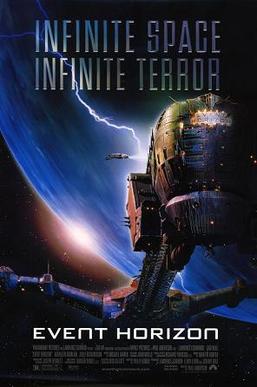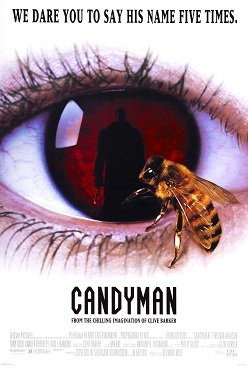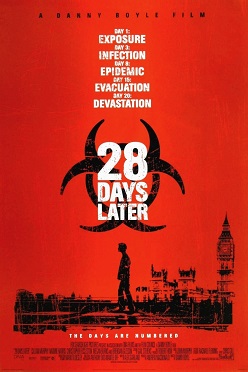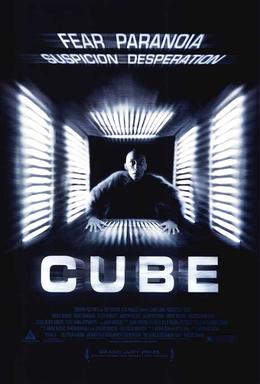
| Director(s) | Sean S. Cunningham |
| Principal Cast | Adrienne King as Alice Peter Brouwer as Steve Laurie Bartram as Brenda Kevin Bacon as Jack Mark Nelson as Ned Jeannine Taylor as Marcie Robbi Morgan as Annie |
| Release Date | 1980 |
| Language(s) | English |
| Running Time | 95 minutes |
| Report Card | Click to go Review TLDR/Summary |



























Clouds go over the full moon as the camera tracks down from the celestial object to a campground, Camp Crystal Lake. The year is 1958. People inside one of the cabins sing a cheery camp song. The film cuts away to an POV shot. It’s subject wades through the campground and looks at the children. Meanwhile, the cheery diegetic track gives way to a more foreboding non-diegetic set of orchestral noises accompanying a whisper-like chant: “ki-ki-ki-ma-ma ma”. The film cuts back to the cabin where the cheery song is being sang and the ominous track dissipates for a moment.
After the singing is done, two of the camp counselors sneak off to enjoy the indiscretions of youth. A close-up of the foreboding moon comes up for a brief moment before the film cuts back to the couple as they vacate to a empty cabin and go upstairs to enjoy more sensual pleasures. However, just as they start getting intimate, the film cuts back to the POV shot and its subject. The non-diegetic chant comes back in and continues to increase in intensity. Suddenly, the subject is face to face with the couple who realizes they’re being watched. The two of them get up and make some excuses to the figure – clearly someone they both know. However, the subject slashes and kills both of them. The camera pushes in on the final victim’s face, cementing the expression of fear before the screen dissolves into an intense flash of white light; the title card shoots forward and breaks the glass screen.
Now, the year is 1980 and the story picks up on a group of camp counselors who have been hired by the owner of the Camp Crystal Lake campground, Steve (Peter Brouwer) to help him with his attempt at re-opening the location. As each of the youthful characters makes their way towards the camp, they run into locals who inform them of site and its terrifying reputation. The townspeople try and warn the new counselors of previous incidents at the camp like a drowning in 1957 and the murders of 1958 to get the youthful bunch to quit, but the youngsters refuse and set-up shop at camp with Steve, getting the campsite ready for a grand re-opening. Unfortunately for them, the movie’s opening moments has informed the viewer of the threat of murderer, so the seeds for the carnage are now allowed to bloom.
If the structure of the opening feels familiar, it’s because the movie intentionally emulates the footsteps of John Carpenter’s seminal classic, Halloween. There’s a scene of conjugal innocence interrupted by a killer whose point-of-view becomes the camera’s view. There’s an iconic theme and music profile associated with the terror; composer Harry Manfredini’s “ki-ki-ki-ma-ma-ma” whisper replaces John Carpenter’s terrorizing synths. This is all intentional; director Sean Cunningham and screen-writer Victor Miller wrote the film explicitly to ride on Halloween’s success and capitalize on what they thought were its strong points for as cheap as possible. [1]Kennedy, M. (2019, December 7). How Halloween directly inspired Friday the 13th. ScreenRant. Retrieved October 2, 2021, from https://screenrant.com/halloween-movie-inspired-friday-the-13th-franchise/.
However, it’s precisely where the movie openings diverge from one another where the issues effecting Friday the 13th can be made clear. Halloween ends its opening sequence by revealing that its killer is a young boy, Michael, shocking the audience and setting it’s story’s dark tone. The film’s use of the P.O.V shot disguises the identity of the killer but reveals their modus operandi and points of focus. However, once the initial act of murder is done, the P.O.V shot is flipped to a traditional view of the subject and the viewer is aghast and made aware that the killer is not normal and is out of synch with the “morally righteous” world. Because the killer is treated as a heinous monster the film is able to focus less on developing their character; through just their screen presence, the killings are made terrifying enough and the tension stems from following the victims that have to deal with the killer who is beyond any reason or comprehension. This creates multiple points of interest and tension.
But Friday the 13th treats the identity of its killer as the driving force of the narrative, generating tension from the possibility of the killer being any of the characters. Yet, because the story gives no clues about the nature of the identity of the killer till late into the third act when the reveal is all but inevitable and also doesn’t make any of the victims interesting in their own right outside of being possible red herrings, there’s absolutely no narrative momentum. Given the movie’s release context and the nature of its killer, it makes sense that Miller wanted to ensure there was no chance the killer’s identity would be revealed. However, because the focus is so stringent on maintaining “perfect” mystery until the moment of the reveal, there’s no reason to care about the movie, sans bits of gory fun, until that moment happens. Naturally, this puts the brunt of the thematic and emotional weight of the narrative on the killer’s reveal and reasoning for acting as they did, but Friday the 13th’s set-up is convoluted to say the least and does not spend nearly enough time laying the seeds for these revelations to feel earned.
Even within the context of the violence, there’s no effort made at establishing any kind of clues regarding the killer’s psychological profile. While Halloween spends little time characterizing its killer, it does relish in showing off its killers macabre decisions to give the viewer room to think about the nature of the killer’s thoughts; there’s an unease generated by trying to and and eventually making sense of the grim choices being made. Friday the 13th doesn’t even try to show personality behind the butchering; while the nature of the kills sequences are all creative by the standards of the time, there’s no connective tissue between them that would lead even a diligent viewer to gleam any meaningful information about the killer’s identity or reasoning for acting in the way they do.
This means the movie, up till the killers reveal, is functionally irrelevant character interaction and nicely put together gore sequences. No character, sans the killer, has a motivation that the viewer can latch onto as a reason to root for anyone through their trials and tribulations. While the group of “protagonists”, though calling them that feels like a stretch in itself, is generally likable, nothing inventive or fruitful ever happens because of or between the characters to distinguish them in meaningful fashion. Unfortunately, this makes the murderous moments ones with low stakes and subsequently renders the characters’ deaths as nothing more than beautiful bits of carnage candy.
But even without stakes, delightful gore with no narrative fat is certainly appealing, depending on the viewer, in its own right and that’s what Friday the 13th excels at delivering. The characters become blood-soaked paintbrushes in makeup designerTom Savini’s hands, conjuring up visions of the macabre and grotesque. Cunningham relishes in the sensuality of the violence and setting up the bodies in cruel and tragic fashion. This effect is accentuated because the movie only shows a few of the murders; selective moments of mutilation engender a matrix of fear which makes the reveal of other bodies all the worse. Because the moments of brutality are incorporated selectively, they actually manage to be shocking. This is why in spite of being light on plot, the film still manages to unnerve. While the characters may not be all that relatable, the way their bodies are violated certainly makes one a bit squeamish concerning their own flesh. It’s no wonder then that in spite of its own inception as a Halloween clone, Friday the 13th has managed to leave its own indelible mark on the slasher genre, demonstrating that good enough gore can make up for a lot.
REPORT CARD
| TLDR | Friday the 13th functions more as a vehicle for slaughter than a deeper foray into the human condition, providing the audience little more than momentarily evocative carnage candy until the explosive reveal of the killer’s true identity and motivations. Though there’s little subtext and the mystery driving the heart of the story is unfairly withheld from the audience until its reveal, the ride the movie takes viewers is fun even decades after its initial release in theatres. For those fans looking for quick, brisk, and to the point slasher-fare, Friday the 13th more than holds up. |
| Rating | 7.4/10 |
| Grade | C+ |
Go to Page 2 for the spoiler discussion and more in-depth analysis.
Go to Page 3 to view this review’s progress report .









